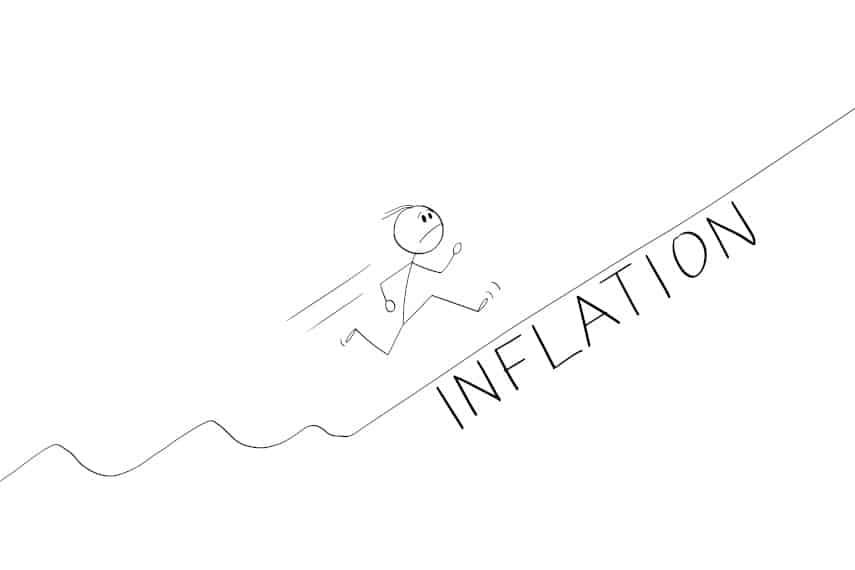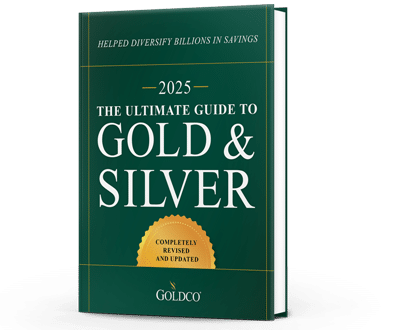6 Indicators of a Potential Recession
It seems that in the media today there are more and more mentions of the dreaded R-word: recession With growing economic uncertainty, the threat of potential recession seems to be growing as...
Economy

Anyone who had hoped that the government’s latest inflation numbers would show signs of improvement was left bitterly disappointed by this week’s release from the Bureau of Labor Statistics. While month-to-month inflation has moderated somewhat, year-on-year inflation has grown even more, reaching 7%. And with the Fed still expanding its balance sheet, we may not have seen the last of this high inflation.
To no one’s surprise, many of the areas of rising prices remained the same in December as in previous months.
Food prices continue to rise, to everyone’s disappointment and consternation. Adding to the problems we’re already facing are bare shelves at grocery stores, which may very well encourage nervous customers to buy even more, putting more upward pressure on prices.
With the omicron variant now spreading throughout the country, more and more people are getting sick and having to take off work, including in the food industry. Meat prices are expected to rise even higher as meat processing plants may have to shut down due to a lack of labor. If you were hoping for food prices to come back to normal anytime soon, don’t hold your breath.
Rising energy prices are another factor behind the rising consumer price index, and one that again won’t be falling anytime soon. With a cold winter still ahead of us, natural gas prices are already significantly higher than they were a year ago. And with geopolitical maneuvering in Europe around natural gas, the prospect for price spikes is a strong one.
Gas prices also aren’t showing any signs of slowing their upward trend either, with prices about a dollar a gallon more expensive than they were a year ago. Some analysts expect average gas prices to reach over $4 a gallon by spring, as prices for oil continue to rise despite falling demand for gasoline. The sub-$2 gas we saw during the lockdowns won’t be returning for a while.
Used cars have been one of the craziest markets in the country, with prices having skyrocketed over the past two years due to a combination of factors. There are no signs of prices returning to reality anytime soon, as COVID-related supply chain issues could very well continue to keep new car production in check, thus keeping demand for used cars elevated.
While not everyone is going out and buying a new (used) car, the longer prices stay high, the more American households are going to feel the pain of these high prices. And with auto parts also in short supply due to supply chain issues, there may be an increasing number of households who will be forced to buy a car just to have something to drive rather than wait months for parts to repair their daily driver.
The Biden administration thus far has been trying to pass the buck. It isn’t acknowledging any fault in handling the inflation crisis, nor is it fingering the Federal Reserve for its role in creating inflation through massive money creation. Instead, Biden has signaled that he intends to use the federal government’s antitrust power to crack down on concentration in the meatpacking industry and the energy industry.
In other words, Biden is trying to blame meatpackers and energy firms for the rise in prices, rather than the nearly $5 trillion the Fed has created since March 2020. Needless to say, misdiagnosing the cause of the problem is not going to be likely to lead to an effective solution.
The Fed, for its part, has suddenly started talking a good game about inflation. Fed Chairman Jay Powell is in the middle of a renomination campaign and is dependent on the Senate to vote to confirm him, so he has to sound like he’s going to be tough on inflation. But for the longest time, Powell and the Fed insisted that inflation was only transitory, and that everything would subside by the end of 2021.
Instead, as the latest numbers have shown, the problem only got worse towards the end of the year. And they could continue to get even worse as the year progresses. After all, if it took nearly a year and a half for the first effects of the first $3 trillion in new money to show up in inflation figures, how long will it take for the effects of the entire $5 trillion or so to show up?
We could be in for an entire year of rising prices, or even two years or longer. The Fed really only has two things it can do to try to combat inflation: raising interest rates and reducing the size of its balance sheet.
The Fed’s balance sheet is going to keep increasing in the near future, at least through March and possibly through May or June, depending on when the Fed decides to finish its program of tapering. And it’s hard to imagine that balance sheet reduction would follow immediately, so all of those trillions of dollars that have been created are likely going to remain in the financial system for some time to come.
Markets are expecting up to four Fed rate hikes this year, but it’s anyone’s guess whether they will actually occur and to what extent the Fed will raise rates. After all, even raising the target federal funds rate to 1% or even 2% will mean that the “real” interest rate is -6% or -5% at current prevailing inflation rates.
The last time inflation was this high, 40 years ago, the target federal funds rate was over 11%. The Fed is nowhere close to being able to raise rates that high, and if it tried to do so it would utterly sink the economy. So don’t expect rising interest rates to put much downward pressure on inflation.
All of this is to say that asset protection is going to be more important than ever. As Warren Buffett has often said, the first rule of investing is not to lose money.
Many Americans have watched their 401(k)s and other retirement accounts growing fat and healthy over the past few years as stock markets have been on what seems to some to be a never-ending push for growth. But seasoned investors and Wall Street professionals know that what goes up must come down, and that the bust will follow the boom at some point.
It’s obviously better to be prepared for the bust ahead of time, which is why thousands of people have already started making the move to protect their assets with purchases of gold and silver. These trusted precious metals have a long history of defending wealth through good times and bad, and their reputation for maintaining and even gaining value during bear markets and economic crises has made them legendary to some.
During the 1970s stagflation, for instance, gold and silver’s average annualized gains were over 30%, with a near 15-fold increase for gold and a near 18-fold increase for silver. And during the aftermath of the 2008 financial crisis, gold nearly tripled in price while silver more than quintupled, while stocks struggled to regain their footing.
Even if gold and silver don’t repeat that exact same performance over the next decade, many people expect gold and silver to at least make significant gains if inflation ends up becoming both high and entrenched. And if stock markets end up collapsing once the Fed puts an end to its money creation, gold and silver should be in prime position to take off.
Protecting your retirement savings with gold and silver has never been easier. With a gold IRA or silver IRA, you can buy and hold physical gold and silver coins in a precious metals IRA while still enjoying the same tax advantages as your current 401(k) or IRA accounts. And you can even roll over or transfer assets from an existing IRA, 401(k), 403(b), TSP, or similar account into a precious metals IRA tax-free.
Don’t allow the retirement savings you’ve accumulated over decades to lose value to inflation. Call the precious metals experts at Goldco today to learn how to keep your wealth safe and secure with gold and silver.

